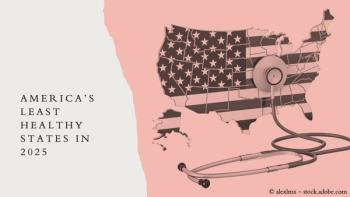
Access to healthcare: location trumps income
A new study of healthcare disparities between states shows that poor residents of high-performing states often have better health outcomes than affluent residents of low-performing states.
If you practice in Hawaii, Wisconsin, Vermont, or Minnesota, chances are that many of your poorest patients are in better health than affluent patients in Alabama, Louisiana, Oklahoma, and Mississippi.
That is one of the findings of a new state-by-state
Titled “Healthcare in the Two Americas: Findings from the Scorecard on State Health System Performance for Low-Income Populations,” the report ranks the 50 states and the District of Columbia on 30 indicators of population health and well-being in four categories: access and affordability, prevention and treatment, potentially avoidable hospital use, and health outcomes. It was prepared by The Commonwealth Fund, an independent healthcare research organization.
Hawaii, Wisconsin, Vermont, Minnesota, and Massachusetts score highest in the study’s rankings, while Arkansas, Alabama, Louisiana, Oklahoma, and Mississippi rank lowest.
The report finds that on 24 of the indicators, the experiences of low-income residents-those earning less than $47,000 for a family of four or $23,000 for an individual (200% of the federal poverty level)--in the top-performing states often exceeds the national average. Moreover, for half of the indicators, including infant mortality, obesity, and smoking, the rates among people with low incomes were better than those of higher-income populations in other states.
As an example, the report cites the fact that low-income Medicare beneficiaries in Wisconsin and Connecticut are less likely to be prescribed high-risk medications than are high-income beneficiaries in Mississippi, Louisiana, and Alabama.
Nationally, 55% of Americans under age 65 and with incomes below 200% of the poverty level were either uninsured or underinsured in 2010-2011. Massachusetts had the lowest percentage (36%). Alaska, Colorado, Florida, Idaho, Montana, Nevada, New Mexico, Utah, and Wyoming all had 60% or more of their residents un- or underinsured.
“We found repeated evidence that we are often two Americas…when it comes to opportunities to lead long and healthy lives,” Cathy Schoen, Commonwealth Fund vice president and the study’s lead author said. “Our hope is that state policymakers and healthcare leaders use these data to target resources to improve access, care, and the health of residents with below-average incomes.”
Newsletter
Stay informed and empowered with Medical Economics enewsletter, delivering expert insights, financial strategies, practice management tips and technology trends — tailored for today’s physicians.








